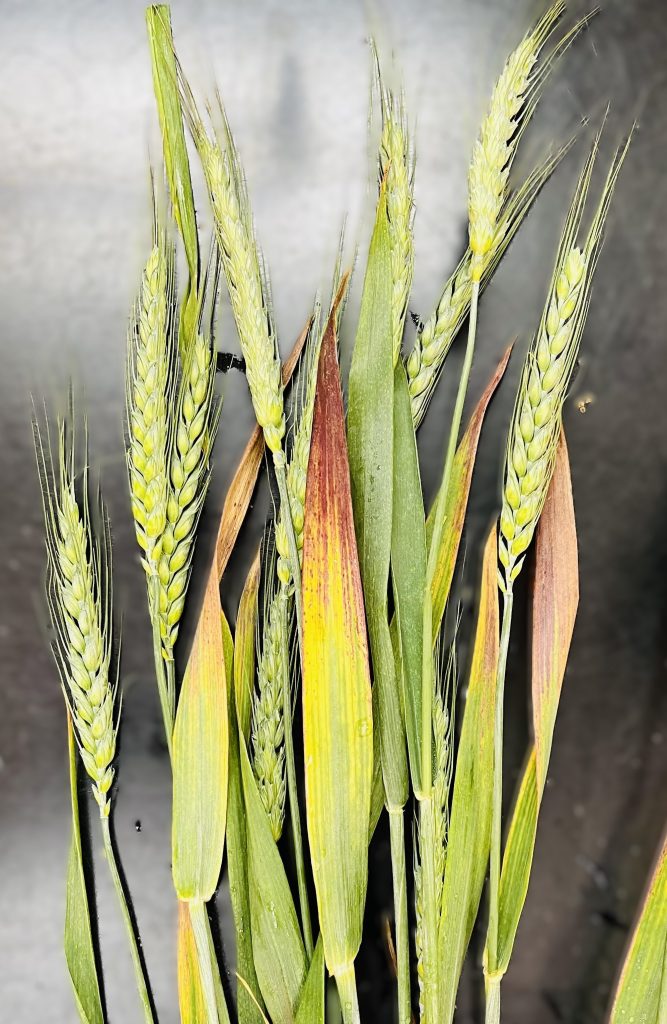Barley yellow dwarf virus (BYDV) is a significant threat to small grains worldwide and is currently impacting winter wheat in Virginia. This virus is transmitted by cereal aphids. In addition to wheat, BYDV can also infect barley and other perennial grassy hosts, including forage crops such as tall fescue. Yield losses to BYDV often do not exceed 30-35%; however, excessive losses have also been reported in some regions.
Our ongoing survey in Virginia is indicating a widespread BYDV infection. Nearly all the samples tested in 2024 have been positive for BYDV. These samples were received from Augusta, Culpeper, Essex, Prince George, Shenandoah, Montgomery, Northumberland, and Nottoway counties.
Symptoms
BYDV symptoms include reddening or yellowing of leaves (starting from the tip and leaf edges), reduced root biomass, and decreased stem height, ultimately affecting yield and grain quality (Fig. 1). These symptoms also resemble those of other conditions; therefore, laboratory testing is needed to confirm BYDV infection.

Management
Once infected, there is no remedy for the affected plants. However, a combination of cultural and chemical approaches can help minimize the risk of BYDV spreading.
Managing weeds and volunteers can eliminate BYDV and aphid reservoirs. Late fall planting provides an opportunity for the young seedlings to evade infestation by aphids that are on the move from reservoirs. Seed treatment with systemic insecticides combined with late planting are expected further to minimize the risk of BYDV infection in the fall.
Infections that occur in the spring are not expected to result in significant losses since plants often outgrow BYDV infection.
Mapping BYDV distribution in Virginia
We are currently investigating the distribution of BYDV in Virginia and evaluating factors that can predict the risk of BYDV incidence. You can contribute to our ongoing research by sending plant samples for BYDV testing; samples will be tested free of charge. Your participation will help us better understand the prevalence and transmission dynamics of BYDV in Virginia, enabling us to develop targeted management strategies to mitigate the risk of BYDV incidence in agricultural landscapes.
Please fill out this form and include it with your plant samples.
This article is prepared by Shirin Parizad.
